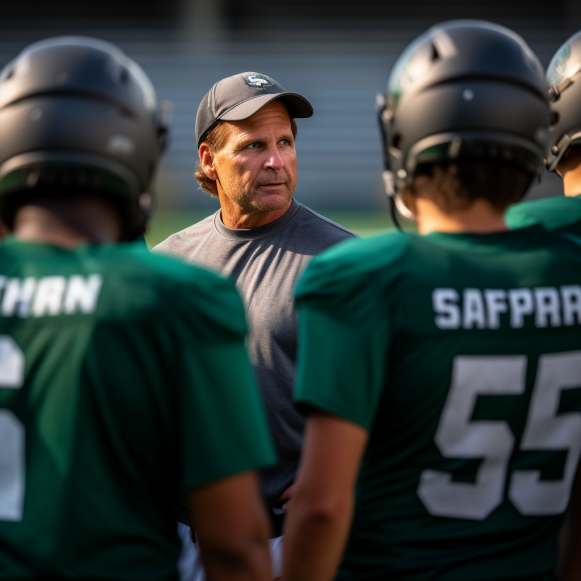Mailbag: Future schedules for the Four Corners schools, Pac-12 bylaws, MW dissolution, WSU ratings and more
Assessing the CFP path for a two-loss Pac-12 champion
Some of the departing Pac-12 schools have games scheduled against teams that will soon be conference opponents. Will the newly-created openings for non-conference dates be filled by matchups against former Pac-12 teams? Are certain teams likely to avoid each other in the future? — @DOUGINTUCSON
Cal is unlikely to schedule UCLA anytime soon, and relations in the Pacific Northwest are strained. However, the Hotline has not detected any level of animosity that would prevent Pac-12 football programs from scheduling home-and-home series against each other.
Three issues, in our opinion, will govern non-conference strategy:
— The impact on College Football Playoff access, which won’t be clear until the selection process for the CFP contract cycle, which begins in the 2026 season, is finalized.
— The desire to play non-conference road games as close to campus as possible, given the long distances that many schools must travel during league play.
— The need for a consistent presence in California in general, and Southern California in particular, because the state will continue to be the primary recruiting ground for the majority of schools in the western third of the country.
Washington and Oregon will play conference games in Southern California and will be under pressure to keep their annual meetings with Washington State and Oregon State.
Cal and Stanford may be concerned about flight time. They will have extensive travel obligations as the only members of the ACC’s western wing.
The Four Corners schools, in our opinion, have the most interesting schedules.
The Arizona schools, particularly Utah, will be eager to play in Los Angeles.
According to FBschedules.com, Arizona State is essentially booked for the rest of the decade and does not have any home-and-home series scheduled with current Big 12 teams. As a result, the Sun Devils’ opportunities to play California schools may be limited.
Arizona has four dates with teams that will be conference opponents starting next fall, including Kansas State in 2024-25 and Brigham Young in 2026-27.
Colorado is in a similar situation, with four games scheduled: Houston in 2025-26 and Kansas State in 2027-28.
There’s no guarantee the Big 12 will make those games league games; they could remain on the schedule as non-conference games, limiting Arizona’s ability to schedule the California schools.
The situation in Utah is more complex — and potentially more advantageous.
The Utes will play Baylor next season and Houston in 2026-27, as well as six games against archrival BYU — a total of nine dates that could be converted into conference games.
Would Utah prefer a couple of home-and-home series with USC, UCLA, or even San Diego State? Probably. But it’s not that easy. Everyone is concerned about schedule overload.
Many high-level football programs follow the A-B-C model, which includes a Power Five opponent, a Group of Five opponent, and an FCS opponent in a balanced non-conference schedule.
This season, the Utes went A-A-C with both Florida and Baylor, but that isn’t always the best option.
Given the presence of Arkansas and Wisconsin on the schedule in the coming years, coach Kyle Whittingham and athletic director Mark Harlan must be cautious if the Big 12 schedule allows for non-conference flexibility and the California schools are interested in home-and-home series.
As I struggled to stay awake through the Pac-12 night games last weekend, I wondered how the new rules have affected the length of games so far. Any numbers yet, or is it too early? — @AlWasser1
Although it is early, Yahoo published the following national data on the running clock rule earlier this week:
— 3 to 4 fewer offensive snaps per game
— fewer than six or seven total plays (including special teams)
— five minutes of game time reduction
Over the course of a 12-game season, that translates to about 80 fewer total plays per team.
Remember one of the reasons for the rule change: to compensate for the increased total snaps that will result from the expanded playoff.
Teams that reach the championship game may end up playing 17 games, which is difficult to justify under any circumstances — but slightly less so if the regular-season grind is reduced.
Can you lay out the case for the Mountain West teams dissolving their conference and joining the Pac-12? What would happen to the existing MW media deals? Which teams would make the transition? Would any get left behind? — @RockDawg3
The argument is based on brand value: even in its weakened state, the Pac-12 brand outperforms the Mountain West brand. Keep the Pac-12, and any new schools would join Washington State and Oregon State in the conference’s illustrious history.
In this scenario, Mountain West schools would vote to disband their league, eliminating any exit fees, and join the Pac-12 — presumably in time for the 2024 football season… and in charge of MW commissioner Gloria Nevarez.
(George Kliavkoff, Pac-12 commissioner, will be out of a job next summer, if not sooner.)
The media contract is obviously crucial. The current deal between the MW and Fox and CBS expires in the spring of 2026. Perhaps the networks would agree to keep the terms but simply shift the agreement to the Pac-12 (while accounting for the increase in teams from 12 to 14, as well as game inventory).
Legally, any nine schools could vote to dissolve the MW and join the Pac-12, displacing three. However, this would result in an 11-team Pac-12 conference. It’s not ideal.
Our guess is that if a reverse merger of this magnitude occurs, it will include every team currently in the MW.
It looked like the Pac-12 Network would be a casualty of the conference implosion. But could it be an asset going forward in media rights talks with Apple, CBS Sports and other streamers looking to carry college sports? — @pfnnewmedia
The Pac-12 Networks have the infrastructure to produce all of the football games that a streaming partner would want, and they could be an appealing part of any negotiations.
Of course, that process would be contingent on WSU and OSU agreeing to rebuild the conference, which is still a long way off.
Certainly, the legal action is a stumbling block. However, the conference office has been slow to provide the Cougars and Beavers with the critical financial information they require to make their decision — the Pac-12 Networks’ assets and liabilities are included in the calculation.
Is the delay the result of sloppy bookkeeping, a procedural issue, obstinacy, or incompetence? We don’t know. However, the two schools are dissatisfied.
Does commissioner George Kliavkoff not have a point in his Sept. 8 letter to Washington State and Oregon State? The “notice of withdrawal” clause was aimed at schools literally leaving the conference prior to Aug 1, 2024. The ten departing schools are not leaving (or withdrawing) prior to that date. — @BruinStrmShadow
That is up to the court and the attorneys, but here is the relevant section of the bylaws:
“No member shall deliver a notice of withdrawal to the Conference between July 24, 2011, and August 1, 2024; provided, however, that if any member delivers a notice of withdrawal prior to August 1, 2024, in violation of this chapter, the Conference shall be entitled to an injunction and other equitable relief to prevent such breach…
“Additionally, if a member fails to deliver notice of withdrawal in accordance with this chapter, the member’s representative to the CEO Group shall automatically cease to be a member of the CEO Group and shall lose the right to vote on any matter before the CEO Group.”
After announcing their departures for new leagues, USC, UCLA, and Colorado were removed from the board.
We believe that precedent will be as important as the precise wording in the bylaws in the final decision.
Should a two-loss Pac-12 champion make the College Football Playoff? — @saltlakeshirts
If ever there was a year, it would be 2023. The Pac-12 is arguably the best conference in the country, with eight ranked teams and a 20-3 non-conference record.
Of course, the number of one-loss teams in other leagues, as well as the nature of the Pac-12 team’s two losses, would be factors. They’d have to be high-level defeats, with close calls against ranked opponents.
And they’d have to come during the regular season, because a non-champion with two losses has no chance.
Let’s say USC performs well on the road against Notre Dame and Oregon, wins four or five games against ranked opponents, and wins the Pac-12 title. The Trojans (12-2) might have a chance in that scenario.
But keep in mind that no two-loss team has ever made the CFP, and the Pac-12 would be the first conference to do so.
Did you see the television ratings for Washington State’s win over Wisconsin? Why isn’t anyone aware that WSU’s media market is Seattle? — Matthew Mayhew
Yes, we saw the ratings. We’ve also seen multi-year audience data for Washington State. The numbers outnumber every Pac-12 school headed to the Big 12.
And guess what: ESPN and Fox have seen those figures as well. They know exactly how many people watch a typical WSU game.
The Cougars did not fall behind in the realignment game because of low viewership or a mediocre football program.
They were left behind due to a combination of average viewership, poor geography, and a football brand that isn’t on par with Washington and Oregon.
They were not required, and other schools fit better in different categories.
Academically, Stanford and Cal fit better in the ACC.
Geographically, the Four Corners schools fit better in the Big 12.
In the Big Ten, the Los Angeles schools, Oregon, and Washington fit better in terms of brand and market size.
WSU’s viewership data, while better than many fans realize, was only one component of a larger equation.
Conferences like the Mountain West and American have early departure fees/fines. Does the Pac-12 have such language in its bylaws? If not, why? Is it smugness, thinking no one would want to leave the “Conference of Champions”? — @cubsfan7331
The bylaws contain no exit fees or penalties, which could be interpreted as yet another example of Pac-12 arrogance and mismanagement, as you noted.
The only financial requirement is that departing members forfeit their media rights revenue from the time they leave until the end of the grant-of-rights contract on August 1, 2024.
However, none of the departing schools are leaving before the contract term is up, so they will not be penalized financially.
Has the upper limit of so-called Cali-mony been set? Or is it possible to go over $10 million? — @JackDorseysmok1
For those who are unaware, the University of California Board of Regents has retained the authority to compel UCLA to subsidize Cal’s athletic department (via revenue from its Big Ten media contract).
The regents’ metric is as follows:
“After Pac-12 media agreements are finalized, the President will return to the Regents with a recommendation for a contribution by UCLA to the Berkeley campus in the range of $2 million to $10 million, to be used to enhance student-athlete support at that campus.”
“Such a recommendation will be based on the most recent available data on projected revenues for both campuses.” The contribution amount will be finalized by the Board of Regents.”
The regents are free to do whatever they want within the confines of their policies and procedures. There’s nothing stopping them from raising the cap beyond $10 million because they voted to create the so-called Berkeley tax (or Cal-imony) in the first place.
However, the Hotline does not anticipate this outcome. We anticipate a subsidy in the upper half of the established range.
If you could see all of the documents and emails from the discovery phase of the lawsuit brought by WSU and OSU, what would you be most interested to see? I’d like to see the actual viewership numbers for the least popular sports events on the Pac-12 Network. — Daniel Nys
I can answer that question for you: many Olympic sports events on Pac-12 Networks draw only a few hundred or a couple thousand viewers.
They’re friends-and-family sports that don’t produce enough viewers to justify the networks’ six regional feeds’ enormous cost over a 12-year period.
In terms of our discovery phase wish list, the Hotline would be very interested in the details of the media rights negotiations from the late summer and fall of 2022, when the Pac-12 had the option to sign a deal with ESPN but declined.
Do you think Washington State and Oregon State will eventually prevail in their legal dispute? — @TWamsgans
The attorneys are attempting to schedule a preliminary injunction hearing in late September or early October to clarify the composition of the Pac-12 board.
The smart money, however, is on a negotiated settlement.
Neither wants to be discovered.






